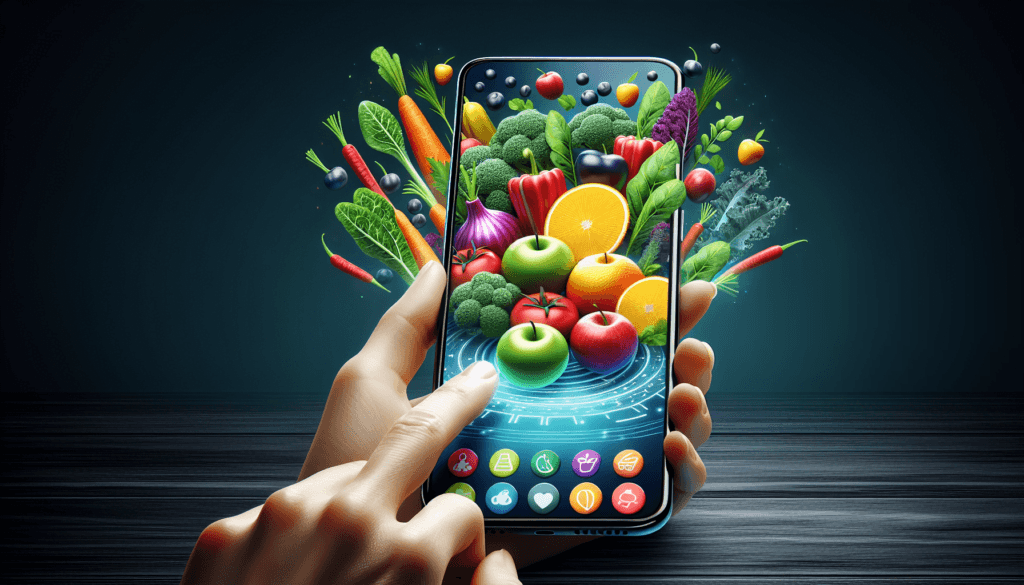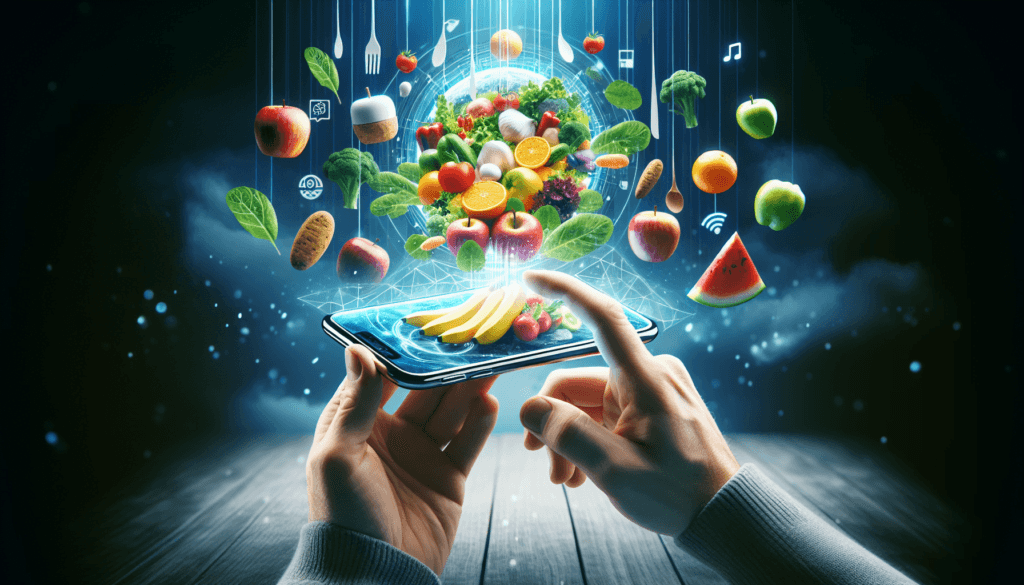Numerous studies have highlighted the influence of digital nutrition guides on our eating habits. These guides are revolutionizing the way people make food choices by providing easily accessible and personalized information on the nutritional content of various foods. With just a few taps on our smartphones, we can now gain valuable insights into the calorie count, macronutrient composition, and even potential allergens present in our meals. This article explores the transformative impact these digital tools have on our dietary choices, shedding light on how they enable us to make healthier decisions and ultimately improve our overall well-being.
Table of Contents
Introduction to digital nutrition guides
Digital nutrition guides have revolutionized the way people approach their eating habits and make dietary choices. With the advent of technology, individuals now have access to a wealth of information at their fingertips, empowering them to make informed decisions about their nutrition. Digital nutrition guides encompass various platforms, including mobile applications, websites, and online databases, which provide users with comprehensive information about the nutritional composition of different foods and beverages. These guides offer a convenient and efficient solution for individuals seeking to improve their eating habits and achieve their health and wellness goals.
Advantages of digital nutrition guides
One of the primary advantages of digital nutrition guides is their accessibility and ease of use. With just a few taps or clicks, users can quickly access a vast database of nutritional information. Whether at home or on the go, these guides enable individuals to make informed choices about their food and beverage consumption in real-time. Furthermore, digital nutrition guides often offer additional features such as personalized meal planning, recipe suggestions, and tracking tools, which further enhance their usability and effectiveness.
Another significant advantage of digital nutrition guides is their ability to provide accurate and up-to-date information. Unlike physical nutrition guides or printed resources, digital platforms can be regularly updated to reflect the latest scientific research and changes in nutritional guidelines. This ensures that users have access to the most accurate and reliable information when making dietary choices. Moreover, digital nutrition guides can also incorporate personalized recommendations based on an individual’s specific dietary needs, allergies, or health conditions, further enhancing their effectiveness and relevance.

Disadvantages of digital nutrition guides
Despite their numerous advantages, digital nutrition guides are not without their limitations. One primary disadvantage is the potential for information overload and confusion. With an overwhelming amount of data available, users may struggle to filter through the vast array of information and make sense of it all. This can result in decision fatigue or a loss of motivation, ultimately hindering individuals’ ability to adopt healthier eating habits.
Furthermore, the reliance on digital platforms introduces a potential barrier for individuals who may not have access to the necessary technology or digital literacy skills. In such cases, the benefits of digital nutrition guides may not be equally accessible to all, exacerbating health disparities among different populations. It is essential to consider inclusivity and explore alternative ways to provide nutritional guidance to individuals who may be excluded from the digital realm.
Effectiveness of digital nutrition guides on eating habits
The effectiveness of digital nutrition guides in influencing eating habits has been the subject of numerous studies and research. While the results vary, overall findings suggest that these guides can have a positive impact on individuals’ dietary choices and overall eating habits. Many studies have shown that individuals who use digital nutrition guides tend to consume a more balanced and nutrient-dense diet compared to those who do not have access to such resources.
Moreover, digital nutrition guides have been found to increase individuals’ awareness and knowledge about the nutritional content of food and beverages. By providing information about calories, macronutrients, vitamins, and minerals, these guides empower individuals to make more informed choices and be more conscious of their daily nutritional intake. This heightened awareness can lead to more mindful eating habits and a greater focus on overall health and well-being.

Factors influencing the impact of digital nutrition guides on eating habits
Several factors can influence the impact of digital nutrition guides on individuals’ eating habits. One crucial factor is the individual’s level of motivation and engagement with the guide. Those who actively seek out and utilize the features of digital nutrition guides are more likely to experience positive changes in their eating habits. On the other hand, individuals who passively use the guide or do not fully engage with the available features may not see the same level of impact.
Another influencing factor is the design and functionality of the digital nutrition guide itself. User-friendly interfaces, clear navigation, and personalized recommendations can enhance the guide’s effectiveness and promote meaningful changes in eating habits. Additionally, the integration of social support features, such as online communities or chat forums, can further amplify the impact by fostering accountability, motivation, and shared experiences.
Positive changes in eating habits due to digital nutrition guides
Digital nutrition guides have the potential to bring about numerous positive changes in individuals’ eating habits. One significant change is the increased consumption of fruits and vegetables. By providing information about the nutritional benefits and suggested serving sizes of different fruits and vegetables, these guides can encourage individuals to incorporate more of these nutrient-rich foods into their diet.
Furthermore, digital nutrition guides can promote a reduction in the consumption of unhealthy, processed, or calorie-dense foods. By highlighting the negative health impacts of these foods and offering healthier alternatives or substitutions, these guides can steer individuals towards making more mindful choices and opt for alternatives that better align with their health goals.

Negative changes in eating habits due to digital nutrition guides
While digital nutrition guides primarily aim to promote healthier eating habits, there is a potential for negative changes as well. One significant concern is the potential for increased focus on numbers and rigid adherence to specific nutritional values. This can lead to an unhealthy obsession with calorie counting, macronutrient ratios, or other numerical parameters, which may inadvertently contribute to the development of disordered eating behaviors or an unhealthy relationship with food.
Moreover, digital nutrition guides may unintentionally reinforce existing societal beauty standards or perpetuate diet culture. The emphasis on weight loss or achieving an ideal body image can lead individuals to prioritize external appearance over overall health and well-being. It is crucial to promote a balanced and holistic approach to nutrition that focuses on nourishing the body, rather than solely on numerical values or aesthetic ideals.
How digital nutrition guides influence portion sizes
Digital nutrition guides play a significant role in influencing portion sizes and promoting portion control. Through features such as serving size suggestions, visual representations, or interactive tools, these guides can help individuals gauge appropriate portion sizes for different foods. This can be particularly helpful for those who struggle with portion distortion or have difficulty estimating appropriate amounts of food visually.
Furthermore, digital nutrition guides can provide insights and recommendations for balancing different food groups within a meal or snack, ensuring that individuals achieve a well-rounded and nutritious diet. By promoting appropriate portion sizes and balanced meals, these guides can contribute to better overall health outcomes and prevent the development of chronic diseases associated with overconsumption or inadequate nutrient intake.

Role of digital nutrition guides in promoting healthier food choices
Digital nutrition guides play a vital role in promoting healthier food choices by providing individuals with comprehensive information about the nutritional content of different foods. By increasing awareness about the potential health impacts of certain foods and beverages, these guides empower individuals to make conscious decisions about what they consume.
Moreover, digital nutrition guides can offer personalized recommendations based on an individual’s specific dietary needs or health goals. Whether someone is following a specific dietary pattern, managing food allergies, or dealing with chronic conditions such as diabetes or heart disease, these guides can provide tailored guidance and suggestions to support their unique requirements.
Long-term effects of digital nutrition guides on eating habits
The long-term effects of digital nutrition guides on eating habits are still being explored, as the widespread adoption of technology in this context is relatively recent. Preliminary research suggests that sustained use of digital nutrition guides can lead to long-lasting positive changes in individuals’ eating habits.
By providing continuous access to accurate and personalized nutritional guidance, these guides can help individuals cultivate healthier habits that extend beyond short-term changes. Over time, individuals may develop a more intuitive understanding of their nutritional needs and be better equipped to make informed decisions independently, even without relying heavily on the guide itself.
In conclusion, digital nutrition guides have a substantial impact on individuals’ eating habits, offering a range of advantages such as accessibility, accuracy, and personalized recommendations. While limitations, such as information overload and potential technology barriers, exist, the effectiveness of these guides in promoting healthier eating habits has been well-documented. By influencing portion sizes, promoting healthier food choices, and increasing awareness about nutrition, digital nutrition guides have the potential to contribute to long-term improvements in individuals’ overall health and well-being.


